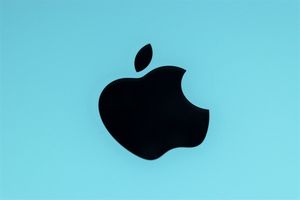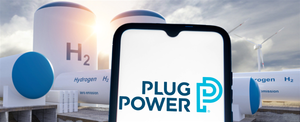Words by Kate Zerrenner
SOURCE: TriplePundit
DESCRIPTION:
About 95 percent of the western U.S. is now under drought conditions, and southwestern states — Arizona, Nevada and Utah, as well as parts of California, Colorado and New Mexico — are suffering a “megadrought” that has been building for over 20 years. The megadrought already outstrips the Dust Bowl of the 1930s and is the worst drought in the region in 500 years. According to scientists, this is the first megadrought caused and exacerbated by climate change. Unfortunately, getting back to pre-drought levels would likely require a decade of wet years, which under current climate scenarios is unlikely.
For people and businesses in the southwest, this means they will need increased emphasis on water conservation and watershed restoration. Luckily, conservation strategies and policies had been ramping up even before the drought lurched into megadrought status over the past few years. In addition to shifting behaviors of consumers — for example, shifting away from water-intensive landscaping — thirsty businesses will need to reconsider their strategies in the region. To that end, Facebook recently announced an aggressive company-wide water goal, including efforts focused on the watersheds in the southwest where Facebook has operations.
Facebook aims to be ‘water positive’
On August 19, Facebook announced a new goal to be “water positive” by 2030 — that is, it intends to restore more water than than it consumes globally. The company had already worked to reduce water consumption at its data centers through increased deployment of renewable energy: In 2020, the footprint of the tech company’s global office and data centers reached the milestone of being supported by 100 percent renewable energy. The added benefit is that wind and solar photovoltaic power systems use negligible amounts of water, reducing the company’s water footprint as well. According to Facebook, the renewable energy switch alone has led to a savings of 1.4 billion cubic meters (over 380 billion gallons) of water, enough to fill 560,000 Olympic-size swimming pools.
“Facebook’s data centers on average already use 80 percent less water than the industry standard,” Stefanie Woodward, water program lead for Facebook, told TriplePundit. “Now with this new goal, we will restore more water than we consume through conservation and ecosystem restoration, water supply and access, and investing in technology solutions to sustain watersheds into the future.” The company has started working in areas identified as those with high levels of water stress: New Mexico, Arizona, Texas, Utah, Oregon and California.
In order to reach its ambitious goal, Facebook has to partner with stakeholders in the watershed. “One thing that’s unique about our water restoration is that we work not just with local nonprofits, but also with utilities,” Woodward said. When looking to establish water restoration and conservation projects, the company tries to find on “projects that have a social justice or climate resilience component” in the watersheds where Facebook has operations, she continued. To that end, so far the company is engaged with 14 different water restoration projects across six basins, which restored 595 million gallons of water in 2020.
New Facebook projects aim to tackle water scarcity in Arizona
One of Facebook’s flagship water projects is in conjunction with its data center in Mesa, Arizona. The city draws water from both the Colorado and Salt Rivers. While the Salt River basin is in relatively good shape, with reservoir levels at 67 percent, the Colorado River is under extreme stress. For the first time ever, in August 2021, the federal government triggered mandatory water restrictions in the watershed, including an 18 percent cut for Arizona, mainly for agriculture. Facebook has invested in projects that will restore 200 million gallons per year to both river basins. Further, the company is working with the Salt River Project to source water credits that cover the operational usage of the data center, instead of drawing water directly from the city of Mesa, freeing up additional supplies for other needs.
While such volumetric goals are important, Facebook’s water-positive goal aims to go beyond the volume. “For each of our high-risk basins, we’re looking at ways we can have a catalytic impact to support those who are already working in the watershed,” Woodward explained. “Research, technology investments and grants can all open the door to work in more creative ways in watersheds, in addition to the volumetric goals.”
Further, the work in Mesa and other sites around Arizona are personal for Woodward, who hails from the state. “The three projects [in Arizona] that we added this year have a special place in my heart, having visited all those places,” she said. As a water expert, Woodward doesn’t need added incentive, but studies show that a personal connection to water makes engaging in water conservation programs more successful. Arizonans will increasingly feel the brunt of water stress in their watersheds, which could lead to more active stakeholder participation.
Communities, water and company operations
Facebook’s announcement comes at a critical point in the intersection of water and technology in water-stressed areas in the southwest. Data centers are notoriously thirsty. It’s a complicated scenario: The southwest is growing in both population and business centers — more straws in the same drink — while climate change adds further stress to supplies. Data centers across the board have improved efficiency, and companies are investing in renewable energy (thus reducing water demand) and setting water goals. Microsoft has a similar water positive by 2030 goal. But some communities are pushing back at water demands from technology companies in their area, and the tension will likely increase as the drought in the region continues.
Efficiency, restoration and the deployment of low-water electricity are all critical components of enabling a water-positive future for the southwest. In order to ensure water supplies are available to meet all the demands of the people and businesses in the region, every stakeholder will need to be engaged. Companies like Facebook with a significant presence and a proactive water stance to not only reduce their usage, but also enhance supplies are necessary for communities to be resilient and sustainable under climate change. In the end, water is always personal.
This article series is sponsored by Facebook and produced by the TriplePundit editorial team.
Image credits: Gert Boers and Tom Gainor via Unsplash
KEYWORDS: triplepundit, Facebook, water








